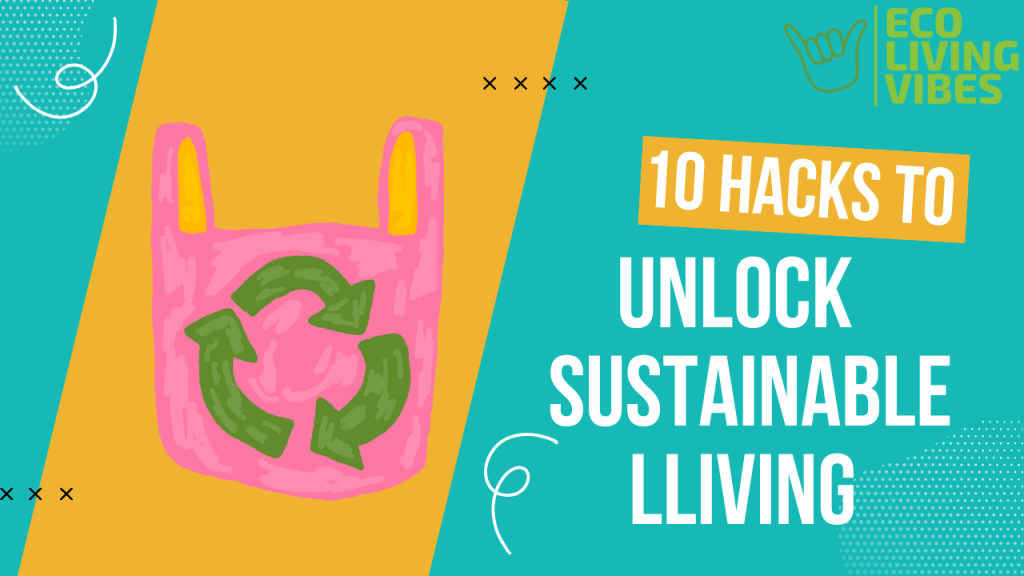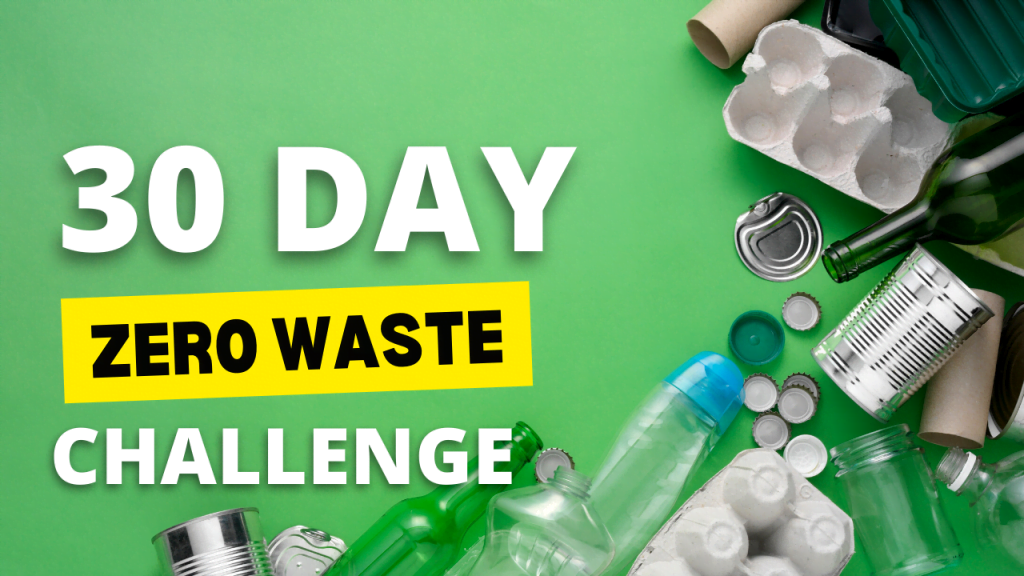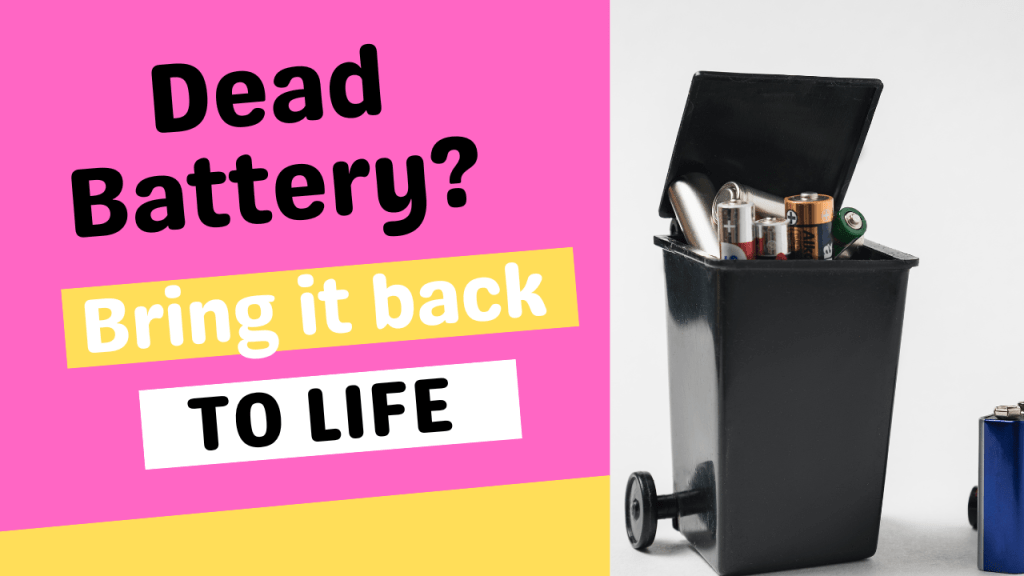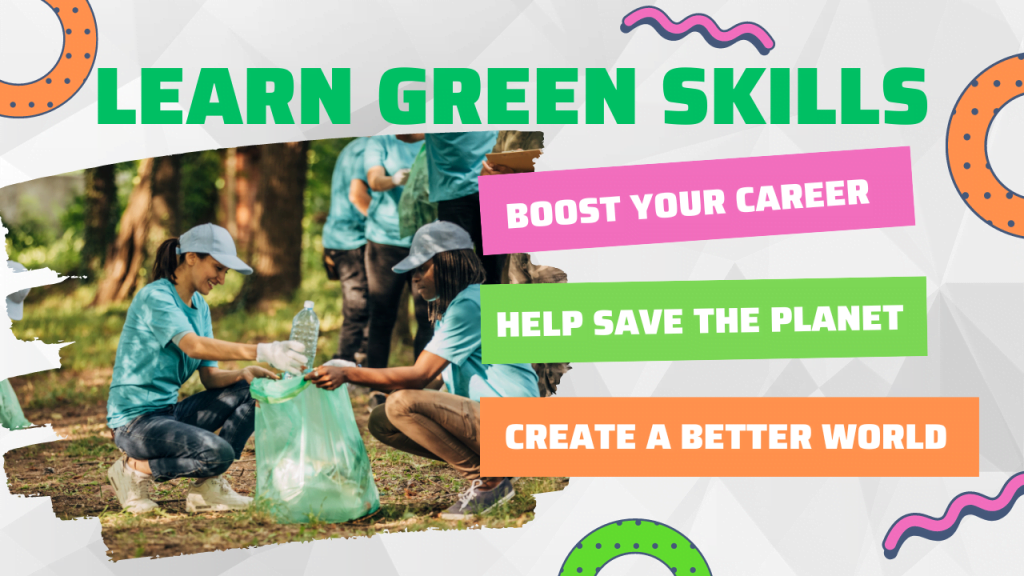Welcome, eco-warriors! If you’re looking to make a real impact on the environment and your community, you’re in the right place. We’ll explore the 6 Rs of sustainability, the game-changing principles that can transform your life and the world around you. With practical tips, inspiring examples, and engaging insights, you’ll soon be living responsibly like a pro. So, let’s dive in!
Table Of Contents
Introduction
Rethink
Refuse
Reduce
Reuse
Recycle
Repair
Resources (not a 7th R just co-incidence!)
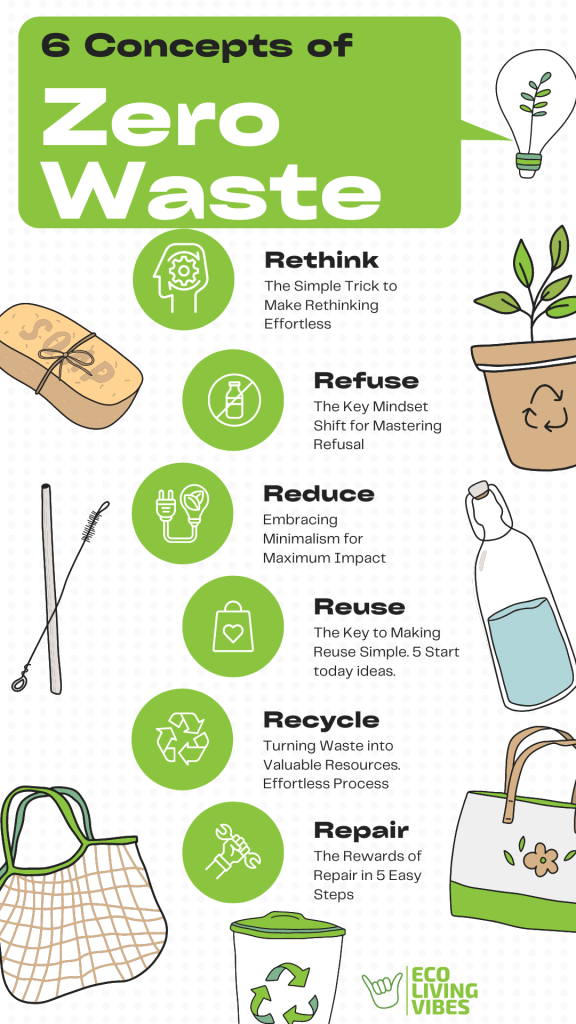
Introduction
Have you ever wondered how you can make a difference in the fight against climate change and environmental degradation? The answer lies in embracing the 6 Rs of sustainability: Rethink, Refuse, Reduce, Reuse, Recycle, and Repair. These powerful principles guide us toward a more sustainable and rewarding lifestyle, empowering us to take charge of our impact on the planet.
In this comprehensive guide, we’ll break down each of the 6 Rs, explore their importance, and reveal the common challenges people face when trying to implement them. Plus, we’ll share easy-to-follow principles, actionable tips, and resources to help you make a lasting change. And the best part? It’s all delivered in easy bite-sized chunks that’ll make your sustainability journey feel like a breeze!
So, are you ready to join the responsible living revolution and become an agent of change? Let’s get started!
1. Rethink: Questioning the Status Quo for a Greener Future
First up on our journey through the 6 Rs of sustainability is Rethink. It’s all about challenging our existing habits, choices, and mindsets to make more eco-friendly decisions. But what does that really mean, and why is it so important?
What is Rethinking and Why Does it Matter?
Rethinking is the process of critically examining our daily actions, purchases, and lifestyle choices, questioning whether they align with our sustainability goals. It’s the foundation of responsible living, as it encourages us to consider the environmental impact of our decisions and seek greener alternatives.
By adopting a rethinking mindset, we can identify areas where we can make positive changes, reduce waste, and minimise our carbon footprint. In short, rethinking helps us become more conscious consumers and citizens, driving us towards a sustainable future.
Common Challenges in Embracing Rethinking
For many people, the idea of rethinking their entire lifestyle can be daunting. We’re often resistant to change, and it’s easy to feel overwhelmed by the sheer scale of the environmental crisis. However, the key to successful rethinking is to start small and focus on manageable changes that can have a significant impact over time.
Another challenge is overcoming the “out of sight, out of mind” mentality. It’s easy to ignore the consequences of our actions when we don’t see the direct impact on the environment. Raising awareness and understanding the connection between our choices and their effects is crucial for effective rethinking.
The Simple Principle to Make Rethinking Effortless
Ready to kick-start your rethinking journey? The secret lies in adopting a curious and open-minded attitude. Begin by asking yourself questions about your daily habits and choices, like “Do I really need this?” or “Is there a more sustainable alternative?” This simple principle will help you identify opportunities for improvement and encourage you to explore greener options.
5 Easy Ways to Start Rethinking Today
- Evaluate your purchases: Before buying something new, ask yourself if you truly need it. Consider whether you can borrow, rent, or buy second-hand instead.
- Opt for eco-friendly products: Switch to sustainable alternatives, like reusable bags, biodegradable cleaning products, and energy-efficient appliances.
- Reduce food waste: Plan your meals, buy only what you need, and get creative with leftovers. Compost any unavoidable food waste to return nutrients to the soil.
- Question your energy use: Turn off lights and electronics when not in use, unplug chargers, and opt for energy-saving settings on appliances. Consider investing in renewable energy sources.
- Reconsider transportation choices: Walk, cycle, or take public transport whenever possible. Carpool or choose fuel-efficient vehicles to minimise your environmental impact.
5 Long-term Strategies to Keep Rethinking Alive
- Stay informed: Educate yourself about environmental issues and stay up-to-date with the latest sustainability news and trends.
- Engage with your community: Connect with like-minded individuals, attend workshops, and support local environmental initiatives.
- Set realistic goals: Establish clear sustainability objectives and track your progress. Remember, small steps can lead to big changes over time!
- Share your journey: Inspire others by discussing your sustainability efforts with friends, family, and colleagues. Encourage them to join you in rethinking their choices.
- Continuously reassess: Periodically review your habits, choices, and progress to identify new opportunities for improvement and to keep your rethinking mindset fresh.
2. Refuse: The Power of Saying “No” to Unsustainable Practices
Next up in the 6 Rs of sustainability, is Refuse, a principle that empowers us to take a stand against unsustainable products, practices, and behaviours. Let’s explore the importance of this principle, common challenges, and actionable tips to help you make refusal a natural part of your sustainable lifestyle.
Unpacking the Power of Refusing
Refusing is all about saying “no” to products and practices that harm the environment or don’t align with our sustainability values. By refusing single-use plastics, excess packaging, or fast fashion, we send a powerful message to manufacturers and retailers, showing them that consumers demand more eco-friendly options.
Refusing also helps us reduce waste, conserve resources, and minimise our environmental impact. When we refuse to participate in unsustainable practices, we promote a culture of responsible consumption and contribute to a greener future for all.
Why Saying “No” is Harder Than You Think
Although refusing seems simple in theory, it can be challenging in practice. We often face social pressures and convenience factors that make it difficult to say “no” to unsustainable choices. Additionally, many people are hesitant to refuse out of fear of appearing rude, wasteful, or ungrateful.
Overcoming these obstacles requires determination, self-awareness, and a solid understanding of our environmental values. With practice, we can learn to refuse gracefully and effectively, empowering ourselves to make a positive impact.
The Key Mindset Shift for Mastering Refusal
To become a pro at refusing, we need to shift our mindset from passive acceptance to active resistance. By recognizing that our choices have consequences, we can develop the confidence to say “no” to unsustainable practices and seek out greener alternatives.
Keep in mind that refusing is not about deprivation or sacrifice; it’s about making conscious decisions that align with our values and contribute to a sustainable future. The more we practise refusing, the easier it becomes to identify opportunities for positive change and embrace a responsible lifestyle.
5 Small Acts of Refusal You Can Try Today
- Decline single-use plastics: Bring your own reusable bags, bottles, and containers. Politely refuse plastic straws, cutlery, and cups at restaurants or events.
- Skip excess packaging: Opt for products with minimal or eco-friendly packaging. Choose loose produce, bulk items, or package-free options when shopping.
- Resist fast fashion: Avoid impulse purchases and invest in quality, ethically-made clothing. Support brands with sustainable and transparent practices.
- Turn down junk mail: Opt out of unwanted catalogues, flyers, and promotional mailings. Go paperless for bills and statements to reduce paper waste.
- Reject energy waste: Unplug devices when not in use, switch to energy-efficient appliances, and embrace natural lighting and ventilation whenever possible.
5 Sustainable Habits to Develop for Ongoing Refusal
- Plan your purchases: Make a list before shopping to avoid impulsive, unsustainable choices. Research eco-friendly products and brands in advance.
- Embrace minimalism: Adopt a “less is more” mentality to reduce consumption and focus on what truly matters. Declutter your life and donate or recycle unwanted items.
- Stay informed: Educate yourself on the environmental impact of products and industries. Use this knowledge to make informed decisions and support responsible practices.
- Advocate for change: Encourage businesses and policymakers to adopt sustainable practices. Use your voice and your wallet to support positive change.
- Build a support network: Connect with like-minded individuals who share your sustainability values. Share ideas, challenges, and successes to keep each other motivated.
3. Reduce: Embracing Minimalism for Maximum Impact
Now that we’ve covered Rethink and Refuse, let’s move on to Reduce, a principle that focuses on minimising our consumption and waste. We’ll dive into the importance of reduction, common challenges, and tips for making this principle an effortless part of your sustainable lifestyle.
Discovering the Magic of Reduction
Reducing means cutting back on our consumption of resources, energy, and products to lessen our environmental impact. It’s a crucial component of the 6 Rs because it helps conserve finite resources, curb pollution, and reduce waste. When we embrace reduction, we contribute to a healthier planet and set an example for others to follow.
But reducing isn’t just about the environment; it also benefits us personally. A more minimalist lifestyle can lead to cost savings, reduced stress, and a greater appreciation for the things we already have. By focusing on what truly matters, we can enhance our well-being and make a positive impact on the world.
Why Cutting Back is Easier Said Than Done
Despite its many benefits, reducing it can be a challenge for many people. Our consumer-driven society often equates success and happiness with material possessions, making it difficult to resist the urge to buy and consume. Furthermore, the convenience of disposable items and the abundance of cheap products can make it hard to prioritise reduction.
To overcome these obstacles, we need to shift our mindset and focus on the long-term benefits of reducing. By recognizing the value of conservation and minimalism, we can break free from consumerism and embrace a more fulfilling and sustainable lifestyle.
The Essential Principle for Effortless Reduction
At the heart of the reduction principle is the idea of “less is more.” By embracing minimalism and focusing on quality over quantity, we can learn to prioritise our needs over our wants and make more eco-friendly choices. To incorporate reduction into your life, focus on consuming mindfully and making intentional decisions about what you buy, use, and discard.
5 Immediate Ways to Start Reducing Today
- Downsize your possessions: Declutter your living space and donate, sell, or recycle items you no longer need. This will help you appreciate the things you have and reduce the desire for more.
- Save energy: Turn off lights and electronics when not in use, unplug chargers, and use energy-efficient appliances to conserve energy and lower your bills.
- Conserve water: Fix leaks, take shorter showers, and use water-saving appliances to reduce your water usage and protect this precious resource.
- Reduce food waste: Plan meals, buy only what you need, and store food properly to minimise waste. Compost any unavoidable food waste to return nutrients to the soil.
- Choose multi-purpose items: Opt for versatile products that can serve multiple functions, reducing the need for single-use or specialised items.
5 Long-term Strategies for Maintaining Reduction
- Set achievable goals: Establish clear objectives for reducing your consumption and waste, and track your progress to stay motivated.
- Shop consciously: Support local businesses and eco-friendly brands, and prioritise products with minimal packaging and a low environmental impact.
- Embrace DIY: Learn to make your own household products, like cleaning solutions and toiletries, to reduce waste and control the ingredients you use.
- Invest in quality: Choose durable, long-lasting items that won’t need frequent replacement. This will save you money in the long run and reduce waste.
- Stay connected: Join online communities and engage with like-minded individuals who share your sustainability goals. Share tips, resources, and encouragement to maintain your commitment to reducing.
4. Reuse: Unlocking the Potential of the Items We Already Have
As we continue our journey through the 6 Rs of sustainability, we arrive at Reuse, a principle that encourages us to extend the life of the items we already own. Let’s explore the importance of reusing, the challenges we face, and practical tips for incorporating reuse into your daily life.
Understanding the Value of Reuse
Reusing means finding new purposes for items that might otherwise be discarded, giving them a second life and keeping them out of landfills. It’s an essential part of the 6 Rs because it promotes resource conservation, reduces waste, and minimises our environmental impact.
By reusing items, we also save money, support local businesses, and encourage creativity. Reusing is a win-win for both the environment and our wallets, and it’s a practice that can easily become part of our everyday lives.
Why Reusing is Harder Than It Seems
Despite the numerous benefits of reusing, many people struggle to incorporate this principle into their lives. Our disposable culture often prioritises convenience over sustainability, making it challenging to see the value in repurposing items. Additionally, a lack of awareness about the possibilities for reuse can make it difficult to identify opportunities for repurposing.
To overcome these challenges, we need to shift our mindset and focus on the creative potential of the items we already own. By embracing a “waste not, want not” attitude, we can find innovative ways to reuse and extend the life of our belongings.
The Key to Making Reuse Effortless
The secret to successful reusing is adopting a creative and resourceful mindset. By viewing items not just for their intended purpose but for their potential uses, we can unlock new ways to repurpose and extend their life. Keep an open mind and be willing to experiment, and you’ll soon discover countless opportunities for reuse in your daily life.
Simple Ways to Start Reusing Today
- Repurpose containers: Use empty jars, cans, and bottles as storage containers, planters, or even drinking glasses. Get creative with the containers you’d usually recycle or throw away.
- Upcycle clothing: Give old clothes a new life by mending, altering, or transforming them into new items like bags, quilts, or cleaning rags.
- Reuse shopping bags: Bring reusable bags for grocery shopping and other errands, reducing the need for single-use plastic bags.
- Save and reuse packaging materials: Keep bubble wrap, packing peanuts, and boxes for future use, reducing waste and saving money on shipping supplies.
- Embrace hand-me-downs: Share clothing, toys, and other items with friends and family members, giving them a new life and reducing overall consumption.
5 Long-term Strategies for Reuse Success
- Learn new skills: Develop sewing, woodworking, or other DIY skills that enable you to repair, repurpose, or create new items from used materials.
- Shop secondhand: Support thrift stores, consignment shops, and online marketplaces to find pre-loved items at a fraction of the cost of new ones. This helps keep items in circulation and reduces the demand for new products.
- Organise a swap event: Gather friends, family, or neighbours for a clothing or item swap to exchange unwanted items and give them a new life. This fosters community connections and promotes reuse.
- Join a sharing economy: Participate in tool libraries, car-sharing services, or community gardens to access resources without the need for individual ownership. This helps conserve resources and fosters a sense of community.
- Spread the word: Share your reuse successes and ideas with others to inspire them to embrace this sustainable practice. Use social media, blogs, or community events to showcase the benefits of reuse.
5. Recycle: Turning Waste into Valuable Resources
As we continue to explore the 6 Rs of sustainability, we come to Recycle, a principle that focuses on transforming waste materials into new products. In this section, we’ll discuss the importance of recycling, the challenges we face, and actionable tips for making recycling an integral part of your sustainable lifestyle.
The Power of Recycling
Recycling is the process of collecting, processing, and repurposing waste materials into new products. This practice conserves resources, reduces pollution, and minimises our environmental impact. By recycling, we help decrease the need for raw materials and limit the amount of waste that ends up in landfills, incinerators, or the natural environment.
In addition to its environmental benefits, recycling can also lead to job creation and economic growth. By supporting recycling efforts, we contribute to a more sustainable and prosperous future for our communities and the planet.
Why Recycling is Not as Straightforward as It Seems
Although recycling is widely recognised as an important practice, many people still face challenges when it comes to incorporating it into their daily lives. Confusing recycling rules, limited access to recycling facilities, and concerns about the effectiveness of recycling programs can all make it difficult to commit to this sustainable practice.
To overcome these obstacles, we need to educate ourselves on proper recycling techniques and advocate for better recycling infrastructure in our communities. By becoming informed recyclers, we can help improve recycling rates and contribute to a more sustainable future.
The Key to Successful Recycling
The most important aspect of successful recycling is understanding how to do it correctly. This means learning which materials are recyclable, how to prepare items for recycling, and where to take them for processing. Proper recycling ensures that our efforts are not wasted and that valuable resources are recovered and repurposed effectively.
5 Practical Tips for Recycling Success
- Know your local rules: Familiarise yourself with your community’s recycling guidelines and restrictions to ensure you’re recycling correctly.
- Sort your recyclables: Separate recyclables by material type (e.g., paper, plastic, glass) to make the recycling process more efficient.
- Clean and prep items: Rinse and remove any residual food or liquids from containers, and remove any non-recyclable components (e.g., lids, labels) before recycling.
- Recycle electronics responsibly:</strong
- Reduce, reuse, then recycle: Remember that recycling should be a last resort after reducing and reusing. Prioritise minimising waste and repurposing items before recycling them.
5 Long-term Strategies for Becoming a Recycling Champion
- Stay informed: Keep up-to-date with recycling advancements, changes to local guidelines, and new recycling opportunities to ensure you’re always recycling effectively.
- Advocate for change: Encourage local leaders to invest in recycling infrastructure and promote recycling education in your community.
- Get involved: Volunteer at local recycling events, participate in community clean-ups, or join a recycling advocacy group to actively support recycling efforts.
- Set an example: Demonstrate your commitment to recycling by consistently following best practices and encouraging others to do the same.
- Communicate the benefits: Share the environmental, economic, and social advantages of recycling with friends, family, and colleagues to inspire them to join the recycling movement. of sustainability
6. Repair: Extending the Life of Our Belongings
In the last section of the 6 Rs of sustainability, we focus on Repair. This principle encourages us to fix and maintain our possessions to extend their lifespan and minimise waste. We’ll explore the benefits of repairing, common challenges, and tips for making repair a natural part of your sustainable lifestyle.
The Rewards of Repair
Repairing means fixing or maintaining items to prolong their usefulness and prevent them from becoming waste. By repairing our belongings, we conserve resources, reduce waste, and minimise our environmental impact. Additionally, repairing can save us money by avoiding the need for replacements, and it fosters a greater appreciation for the items we own.
Beyond its environmental and financial benefits, repairing also promotes resourcefulness and self-sufficiency. Learning to fix and maintain our possessions encourages problem-solving skills and a sense of accomplishment.
Tackling the Challenges of Repair
Despite its many advantages, repairing can be daunting for those unfamiliar with the process. Limited access to resources, a lack of skills, and the prevalence of disposable products can make it difficult to prioritise repair over replacement.
To overcome these challenges, we need to invest time in learning repair skills and seek out resources to help us succeed. With dedication and practice, repairing can become an empowering and sustainable aspect of our daily lives.
The Key to Repair Mastery
The secret to becoming proficient at repairing is developing a curious and resourceful mindset. By seeking out knowledge, tools, and resources, we can become more confident in our ability to fix and maintain our possessions. Embrace the learning process and be patient with yourself, and you’ll soon find repair to be a rewarding and sustainable practice.
5 Ways to Start Repairing Today
- Learn basic skills: Educate yourself on basic repair techniques, such as sewing, woodworking, or electronics repair, to handle common fixes.
- Invest in tools: Build a collection of essential tools and supplies to help you tackle a variety of repair projects.
- Seek out resources: Utilise online tutorials, books, and community workshops to learn new repair skills and gain confidence in your abilities.
- Ask for help: Don’t be afraid to seek assistance from friends, family, or professionals when faced with a challenging repair.
- Practice patience: Remember that repairing takes time and effort. Be patient with yourself and celebrate your successes along the way.
5 Long-term Strategies for Repair Success
- Stay curious: Continually seek out new knowledge and skills to expand your repair abilities and stay up-to-date with changing technologies.
- Join a community: Connect with like-minded individuals through repair cafes, online forums, or local workshops to share tips, resources, and support.
- Support repair-friendly brands: Choose products from companies that prioritise repairability and provide resources, such as replacement parts and repair guides, to help extend the life of their products.
- Advocate for the right to repair: Support policies and legislation that promote repairability and reduce barriers to fixing our belongings.
- Share your skills: Teach others how to repair and maintain their possessions, spreading the benefits of repair and fostering a culture of sustainability.
In conclusion, the 6 Rs of sustainability (Refuse, Reduce, Reuse, Rethink, Recycle, and Repair) offer a comprehensive framework for creating a more sustainable lifestyle. By understanding the importance of each principle and integrating them into our daily lives, we can minimise our environmental impact, conserve resources, and contribute to a healthier planet for future generations.
Remember that adopting a sustainable lifestyle is a journey, and it’s essential to be patient with yourself as you learn and grow. Every small step you take towards embracing the 6 Rs is a positive change that can inspire others to do the same. By working together, we can make a significant difference in the world and create a brighter, more sustainable future for all.
Additional Resources
In this Resources section, you’ll find a variety of books, podcasts, websites, and apps to help you further explore the 6 Rs of sustainability and improve your eco-living practices. These resources cover a wide range of topics related to sustainable living and will provide you with valuable information and practical advice.
Books:
- “Cradle to Cradle: Remaking the Way We Make Things” by William McDonough and Michael Braungart
- “Zero Waste Home: The Ultimate Guide to Simplifying Your Life by Reducing Your Waste” by Bea Johnson
- “The Upcycle: Beyond Sustainability—Designing for Abundance” by William McDonough and Michael Braungart
Podcasts:
- “Sustainability Defined” – Each episode of their podcast focuses on a single topic that pushes sustainability forward. One bad joke at a time
- “The Sustainable Minimalists Podcast” – A podcast that focuses on living a minimalist lifestyle and reducing environmental impact.
- “Outrage & Optimism” – This podcast covers topics related to sustainability with A last eco stars. Now part of the TED group
Websites:
- Eco Living Vibes – A website dedicated to sharing sustainable living tips, eco-friendly product reviews, and environmental news. You’re already here!
- Literacy Trust – A website with resources to help teachers and literacy practitioners promote sustainable living and environmental awareness.
Apps:
- JouleBug – An app that provides tips and challenges to help users adopt eco-friendly habits, track their progress, and share their achievements with friends.
- My Little Plastic Footprint – This app helps users reduce their plastic consumption by offering practical tips and personalised goals.
- Good On You – An app that rates fashion brands based on their environmental impact, labour rights, and animal welfare practices, helping users make more informed and ethical shopping choices.
The 6 Rs of Sustainability FAQ / TL;DR
1. What is the main goal of practising the 6 Rs of sustainability?
The primary goal is to reduce our environmental impact, conserve resources, and create a more sustainable lifestyle by rethinking, refusing, reducing, reusing, recycling, and repairing.
2. How do the 6 Rs help reduce waste?
By implementing the 6 Rs of sustainability, we minimise waste generation and resource consumption, thus helping to reduce the amount of waste that ends up in landfills, oceans, and the environment.
3. Can I start implementing the 6 Rs without making significant lifestyle changes?
Yes, you can start by making small, incremental changes in your daily habits, such as refusing single-use plastics or recycling more diligently, which will cumulatively contribute to a more sustainable lifestyle.
4. How do the 6 Rs contribute to a circular economy?
The 6 Rs encourage resource conservation, waste reduction, and product life extension, which align with the principles of a circular economy that aims to keep resources in use for as long as possible.
5. What are some challenges in implementing the 6 Rs?
Some challenges include lack of awareness, accessibility to recycling facilities, ingrained habits, and the convenience of disposable products. Overcoming these challenges may require education, support, and a shift in mindset.
6. Are there any economic benefits of following the 6 Rs?
Yes, adopting the 6 Rs can lead to cost savings through reduced resource consumption, lower waste management costs, and potential income generation from recycling or upcycling activities.
7. How can businesses contribute to the 6 Rs of sustainability?
Businesses can adopt eco-friendly practices, improve resource efficiency, prioritise waste reduction, invest in sustainable materials, and engage in corporate social responsibility initiatives that promote the 6 Rs.

